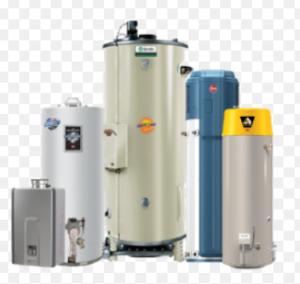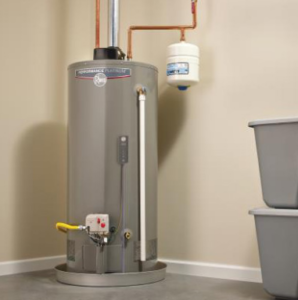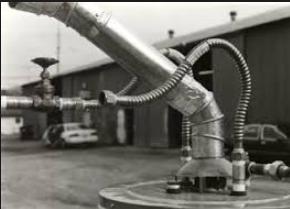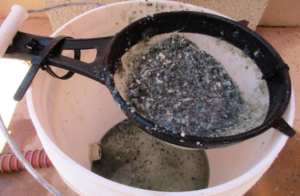Sediment, The # 1 Killer of Water Heater-Here’s How to Deal with the Treat
- Bacteria problems in Water Heaters
- The build-up of Sediments (Scale) Inside Water Heaters
- Softening Hot Water Will Slow Sediment Build-up but It Will Reduce The Longevity of Your Anode Rod Inside Your Water Heater.
- How to Control Sediments
- Dissolving Sediment Chemically
- The Curved Dip Tube Flush Method of Removing Sediment
- Removing Sediment in Commercial Water Heaters
Bacteria problems in Water Heaters
When it comes to sediments, they can cause a lot of issues to your water heater. One of the problems that sediments can cause is bacterial growth. These bacteria do not cause any disease, although they oxygenate corroding your water heater lining. When the bacteria are compounded with sediments and high amount of heat the result can be quite destructive.
The moment you detect a rotten-egg-odor or a sulfur smell, know that you have a problem with your water heater. Be keen so that you do not confuse the smell of natural gas leak as it has the same smell. The two issues are a serious problem and require immediate attention
The build-up of Sediments (Scale) Inside Water Heaters
Water contains natural minerals that flow into the water heater. When the water is heated, the minerals will be deposited at the bottom of your heaters tank. Calcium carbonate is the most common sediment that settles at the bottom of your heater’s tank.
I case you have a gas water heater, sediments will be deposited at the bottom of your water heater, sitting at the burner plate directly underneath the flame. Sediments will act as a barrier of letting heat pass through easily. The glass lining will begin to disintegrate steadily at a temperature of 1600 and above, the glass lining is on the inner side of the tank-type heater.
Metals that are at the bottom of the burner plate can also deform. The build-up of sediment can result to the water heater leaking. In the event that you have your water heater producing a lesser amount of hot water as it used to, this is an indication that you have sediments on the lower heating element. Having a gas water heater that is noisy indicates that you have a build-up of sediments not to forget sulfur odor is also another indication.
Softening Hot Water Will Slow Sediment Build-up but It Will Reduce The Longevity of Your Anode Rod Inside Your Water Heater.
You can control the build-up of sediments by reducing water temperature to 1300 , a temperature of 1400 and above causes sediments to grow rapidly. The temperature of 1300 is able to kill bacteria that are harmful to humans. Legionnaires’ disease bacteria grow at temperature s of up to 1150.
How to Control Sediments
Fill a container using hot water from the tap in the house; put a meat thermometer inside the container with hot water taking note of the temperature. In case you have a gas water heater, use the control knob which is at the bottom for colder or hotter water. The knob is written ON OFF PILOT; there are times a small adjustment knob is at the center of the ON-OFF PILOT control. It is used to be able to minimize the flame size of the burner plate.
For an electric water heater, it has a low-watt density element that is installed in the tank so as to reduce high temperatures being produced. This eventually reduces sediments present in your tank. The low-watt density element has a larger surface area and twice the size; therefore, ensuring that your water remains hot.
In case you have a water pressure that is above 50psi, have a pressure reduce installed. This is because high pressure leads to a faster growth of sediments.
Dissolving Sediment Chemically
You can be able to dissolve sediments chemically by the use of a chemical descaler that is from the A.O.Smith that is called Mag-Erad. Use it when you have no water in the heater and the gas being off, do not leave the gas on when you are using Mag-Erad as it can result to flue damage. The product can also be used for electric water heaters, ensure that you empty the heater, you can do this by letting a licensed plumber flush out the water from the heater by installing a curve dip tube.
The Curved Dip Tube Flush Method of Removing Sediment
A lot of water heaters come with a straight dip tube as a standard, through the cold water inlet water enters the dip tube to the bottom of your heater. The bottom of your heater is cleaned by the force of water as it enters your heater, this leaves the dome-shaped bottom all covered up in sediments. When it comes to draining the heater using the drain valve, will only remove sediments that are close to the drain vale.
With the curved dip tube water swirls around the dome-shaped bottom of the heater. The swirling water full of sediments can now be forced out through the drain valve ensure that you are using full force flushing. Installation of the curved dip tube will require you to shut off the incoming water, then removing cold water nipple that is on the right side of your heater. Insert a pair of plastic handled pliers in to the inlet of cold water, unscrewing the initial dip tube.
With the plier you can pull the dip tube up and out of the heater, ensure you remove any rust that can prevent you from doing this. It is essential that you mark the direction at the top of the new curve dip tube for the new curve by the use of a marker. Using the Teflon tapes, wrap the nipple 8 times on its thread, inserting a new curved dip tube that is in the open. You can have a professional plumber install ¾ inches of ball valve that is for a drain valve.
Removing Sediment in Commercial Water Heaters
When you have noise coming out of your heater or a bad odor, you will have to remove sediment build-up in your heater. The removal of sediments in a gas water heater will result to you saving up to 5% of your energy bills. You will not be able to save as much when it comes to a commercial electric water heater.
For a commercial water heater, you will need to turn off electricity or the gas. Turn off the cold water line and any recirculating system that ought to be turned off. Then open the T and P in order to relieve pressure on the lines, allowing water to be drained through the drain valve.
You can attach a water hose to the drain valve, allowing the draining out of water. If there is no water coming out, then you will be having sediments block the drain valve. You will then have to remove your drain valve, breaking the sediments using a screwdriver.
If there is any rust, ensure that you remove them too. The drain pan is below the open drain valve port; continue flushing the water heater so as to get as much sediments as possible out. You can hire a plumber in order to get rid of all the sediments.






